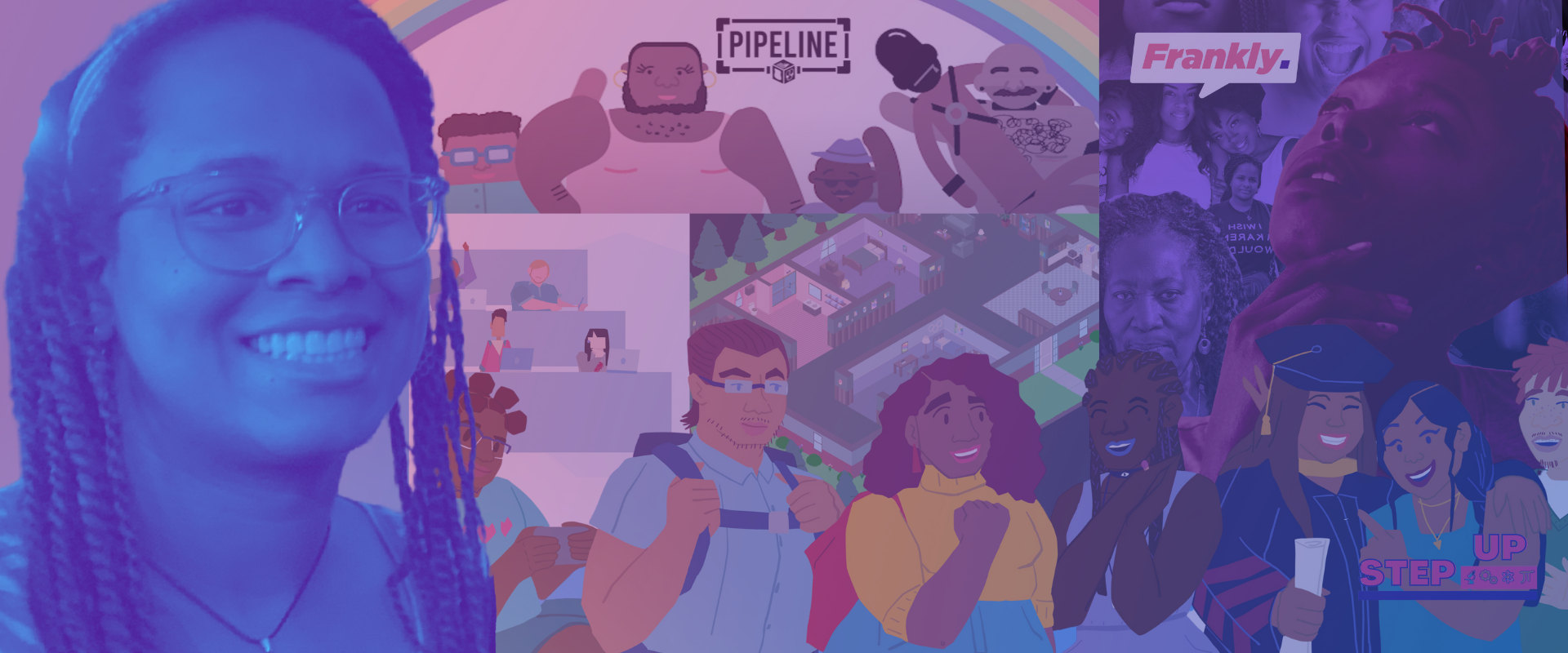The Ci3 Spotlight highlights a staff member from our interdisciplinary team of researchers, designers, storytellers, and policy experts.
Name: Robin Cogdell
Pronouns: (they/them)
Title/Role at Ci3: Visual Communications Designer
Tell us about what inspires your graphic design and illustrative work at Ci3. What’s been your favorite project so far and why?

I draw inspiration from loads of things I regularly consume and like, such as video games, film, and pop culture. In my design and illustration work at Ci3, each project has different objectives and I can use my various interests to help guide the look of any given project. So far, my favorite projects are tied between Pipeline and Step Up. Pipeline is a board game I worked on when I first started at Ci3 that focuses on the school to prison pipeline. I was thrilled to design cards and pieces that felt cohesive with the board game itself. Step Up is more of a visual novel that teaches players about dealing with and overcoming biases and harassment in STEM. I really got to go all out with the characters and make them feel like three-dimensional people, despite being in 2D.
What are you currently working on and what do you like most about it?
Currently, I’m working on background and UI (User Interface) art on Caduceus Quest. It’s a really cool video game that gets young people interested in STEM and also teaches them about the scientific method. While creating human characters is fun, the best part for me is working on the backgrounds, because they’re characters, too. A lot of research and conceptualizing went into exploring real-life locations in order to bring the world to life, and my hope is that it will be fun for players to explore. Every location has a purpose and story to tell about the humans who inhabit it.
How did your earlier years in graphic design inform the work you do today?
I kind of fell into graphic design work. My first internship was at a radio station and when someone asked if any of the interns knew Photoshop, I said yes, despite only having dabbled in it, and I kind of fell into graphic design work. My first internship was at a radio station and when someone asked if any of the interns knew Photoshop, I said yes, despite only having dabbled in it, and I became the go-to design person. It wasn’t even a design internship, but it allowed me to follow my interests and ended up working for both myself and the company. That gave me some great portfolio pieces to secure my next paid internship, and it’s just continued from there. If I didn’t speak up in that one meeting early in my career, who knows what I’d be doing now. I’m grateful to my younger self for being fearless in that instance, and I try to take the same approach today, in not letting imposter syndrome hinder opportunities.
Design is a popular career for many. What advice would you give professionals entering graphic design and illustration?

There are so many talented people out there and I adore their work, but I feel like it’s easy to scroll through other artists’ works and accomplishments and feel like you’ll never get to that level. It can feel paralyzing and keep you from developing and exploring your own style. Lots of artists have their own style and design trends, like fashion, come and go. My biggest piece of advice for professionals entering graphic design and illustration would be not to compare yourself to others and never be afraid to experiment and let your style evolve. The second piece of advice would be to spend less time scrolling and more time creating.
Why did you enter the visual communication field? Is the field itself changing⸺better representation, more inclusive illustrations, diverse representations of people, etc.? If so, how?
I feel like I’ve always been a visual learner and communicator, so it’s no wonder I went into communications. In undergrad, when I learned it was a field I could go into, I jumped on it and never looked back. It’s the one field that I can incorporate all my skill sets and bizarre interests in, because each project is unique. With the increased access to and variety of programs and platforms, the field is definitely growing and I think it’s for the better. The more people with diverse backgrounds and unique perspectives you have on any given team/project can make it that much more rich and exciting. I’m all for sharing knowledge and learning new things.

Tell us about what you enjoy doing most outside of Ci3.
Outside of Ci3, I love playing video games and picking up new things to craft. I also love being indoors, but when I venture outside, I enjoy bird watching and collecting seashells and cool rocks. One day I want to get a metal detector and go treasure hunting on the beach.





